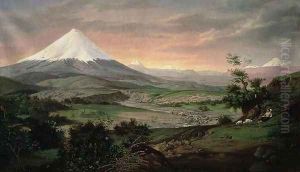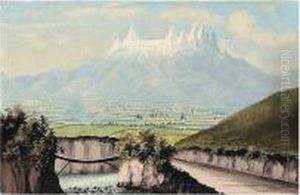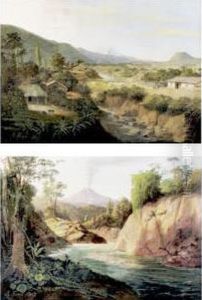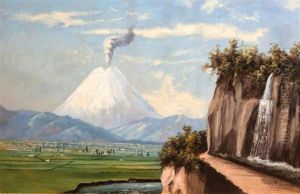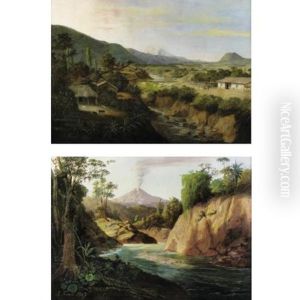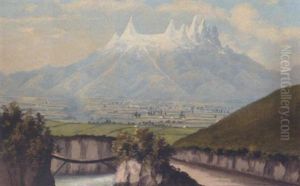Rafael Troya Paintings
Rafael Troya was an Ecuadorian painter, born on April 14, 1845, in Quito, Ecuador. He is considered one of the most important figures in Ecuadorian art history, particularly known for his landscape paintings that capture the beauty and diversity of the Ecuadorian terrain. Troya's work was heavily influenced by European art movements of the time, as he had the opportunity to study in Europe, where he honed his skills and developed his artistic style.
Troya's early education began in his native city of Quito, where he was initially trained by his father, who was also an artist. He later attended the Escuela de Bellas Artes de Quito, which was the most prestigious art school in the country. His talent and dedication to art were evident from a young age, and he soon received a scholarship to continue his studies in Europe.
During his time in Europe, Troya traveled extensively, studying and working in countries such as Italy and France. This experience exposed him to various artistic styles, including Romanticism and Realism, which would greatly influence his later work. He studied at the Accademia di San Luca in Rome and also spent time in Paris, which was the hub of the art world in the 19th century.
Upon returning to Ecuador, Troya brought with him a refined artistic technique and fresh perspectives that enriched the local art scene. He dedicated himself to painting landscapes that depicted the Ecuadorian Andes, the Amazon, and the Galápagos Islands, among other locations. His works not only showed the majesty of these places but also often included indigenous people and their customs, providing a valuable visual record of Ecuadorian culture at the time.
Throughout his career, Troya was also an art educator, influencing future generations of Ecuadorian artists. He served as a director at the Escuela de Bellas Artes de Quito and was known for his commitment to the development of the arts in Ecuador. Through his teaching, he helped to establish a stronger foundation for the arts in his country, nurturing the talents of many young artists who would follow in his footsteps.
Rafael Troya's contributions to the arts were not limited to his paintings and his teaching. He was also involved in the cultural and intellectual circles of Quito, actively participating in discussions and initiatives that sought to promote the arts and culture in Ecuador. His legacy is one of a pioneering artist who bridged European artistic traditions with those of his homeland, creating a unique body of work that celebrated Ecuador's natural beauty and cultural richness.
Troya's paintings are now considered national treasures and hold significant cultural value in Ecuador. His works are displayed in various museums and collections both within Ecuador and internationally. Rafael Troya passed away on October 25, 1920, in Quito, leaving behind a rich artistic legacy that continues to inspire and resonate with art lovers and historians alike.
